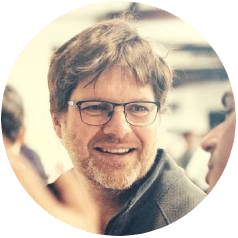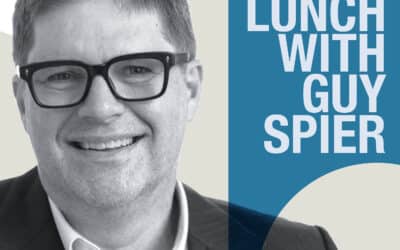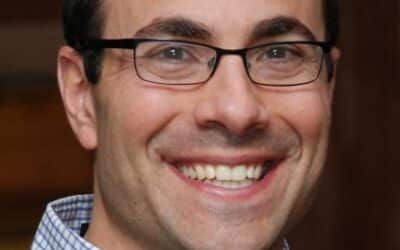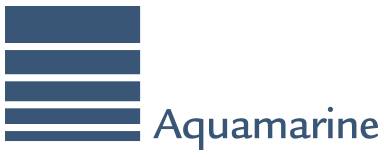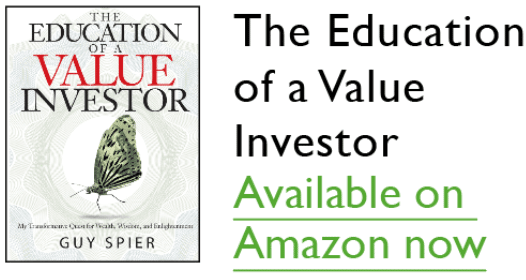INTRODUCTION: PART I
Some time ago, I wrote up the criteria that I would use in deciding with whom I would invest my and my family’s money if I was not doing the job myself:
I argue that there are five attributes that the ideal money manager should possess:
1 Investing their own money
2 The primary or sole focus
3 Do it as an activity, not a business
4 Good at it
5 Fiduciary gene
I also promised a list of those people who would be on the list of candidates. You will find it towards the end of this document. If you want to, you can skip straight to it, but I wanted you to read some provisos and health warnings beforehand – without which it would not be complete.
1.PUBLIC COMPANIES
Before we get to the private managers, there are some publicly traded companies that are run more like partnerships, with great capital allocators at the helm and where a significant portion of the net worth of the owners-managers is invested in the company. They have the great advantage that one can buy or sell their shares on a daily basis on an exchange and there are few wealth or other restrictions to buying.
Were I not managing my own money, I would certainly leave a significant chunk with them.
a. Berkshire Hathaway
Berkshire hardly needs an introduction – but a write-up of whom I would invest with would be incomplete if it did not start with Berkshire.
When one invests in Berkshire in, addition to getting Warren Buffett for a mere $100,000 a year, one is getting the investment and capital allocation talent of Charlie Munger, Ajit Jain, Greg Abel, Todd Combs and Ted Wechsler.
Moreover, by investing a portion of one’s wealth in Berkshire, one is partnering up with an extraordinary group of co-owners: the Bill and Melinda Gates Foundation, the Wertheimers who sold Iscar to Berkshire, the Uetschis – who sold FlightSafety, the Tisch Family and the Buffett and
Munger clans (not to mention the Spier family and Aquamarine Fund).
In other words, Berkshire is the Alpha and the Omega. The beginning and the end. Pretty much everything that relates to intelligent investing starts with Berkshire Hathaway and Warren Buffett.
Many, if not all of the important lessons are embodied in Berkshire for us all to learn. At least in my
book.
b. Markel Insurance
Markel is probably the most successful cloner of Berkshire. Investors in Markel are partners with the Markel family and with Tom Gayner.
Every year Markel holds a few events at Berkshire – most famously the Markel brunch. Most recently Markel announced that it had hired Saurabh Madaan from Google into its investment team. In addition to being a data scientist, Saurabh has become known to many people through his excellent work running the Authors@Google speaker series. Tom is a farsighted thinker, and it’s going to be interesting to see how Saurabh’s career unfolds at Markel, and what sort of impact Saurabh will have on Markel’s investment portfolio.
c. Liberty Media
John Malone at Liberty Media has created enormous value for his shareholders and has been a fair partner to his capital providers. An investment in Liberty requires a willingness to look carefully at the specific security that one owns and to keep paying attention because there is almost always some kind of financial engineering going on and one needs to be careful about which securities one chooses to go with.
d. Exor
John Elkann and Exor only recently came onto my radar. I started following John through my investments in Fiat and Ferrari and after having met him at the Berkshire Hathaway meeting. This year, I attended his annual meeting in Turin for the first time. It’s taken me a long time to cotton on to the simple idea that future companies like Berkshire Hathaway and Markel insurance will not have to be based in the United States. John Elkann has Italian roots, but a global education and outlook. His ambitions for Exor are very similar to those of the Markel family, and I believe that he is a worthy partner.
I am quite certain that, if all the reader of this paper did was invest their money in some combination of the above-mentioned companies and just did nothing for a long time, their investments would do extraordinarily well – far better than any index.
It’s a pleasure for me to write about them, and to follow them. Indeed, if one-day, Aquamarine Fund ends up becoming some version of the above companies, I would consider it an extraordinary achievement -something that I would be very proud of.
2.GENERAL HEALTH WARNING
Please note the following caveats about this list:
a. Not the product of systemic research
This is the opposite of a systemic industry survey: It is idiosyncratic and personal – and represents people that I have learned about along the way. I know some of them very well. Others not so well.
In other words, it is very likely that there are people that should have been included and some that I have forgotten or lacked the oversight to include.
b. Not a final list
This is not a final list: it’s the starting point. It’s the list of people with whom I would make enquiries were I looking to invest my money with an outside manager.
c. Not an endorsement in any way
This is not an endorsement or a recommendation. Inclusion should in no way be considered a prediction of satisfactory results. Caveat Emptor or buyer beware certainly applies here.
Lastly, if I were actually conducting a search, one of the first questions that I would ask each of the managers is to tell me whom they respect highly and where they would invest their money were they not doing it themselves. That way, the list would expand and regenerate based on the knowledge of multiple insiders who really know.
Please share your feedback with me
With all of this in mind, I am quite likely to revise this document. If there is someone that you highly respect whom you think should be included, I invite you to introduce them to me. Moreover, please do provide me with feedback and updated, or more accurate information, so that I can incorporate here and resend.
PEOPLE THAT I WOULD CONSIDER INVESTING WITH IF I WAS NOT MANAGING MONEY MYSELF
The following is in approximate chronological order of when I met or got to know the person in bold who would be on my shortlist.
In 1991 I met Bryan Lawrence who was a fellow member of Section E at Harvard Business School. I have had the privilege of following his career closely. First, he was an investment banker – and became a partner at Lazard Brothers. When he decided to leave, I strongly encouraged him to become an investor. Now he has also taken on a role at the Private Equity firm that was founded by his father.
Over the time that I have come to know Bryan and his father, I have never stopped learning from them. They have an extraordinary and unusual business culture in which they treat their partners extraordinarily well – no matter what the cost to them.
I met Chris Rossbach through Bryan Lawrence – when they both worked together at Lazard in New York.
He went on to be an analyst with Chris Hohn at TCI before forming Stern and Co.
Like Bryan Lawrence, Chris Hohn was also a classmate at HBS: we were both part of a four-person project in Professor Regina Herzlinger’s Healthcare Industry Class – although he hardly needs an introduction. His intense focus on compounding capital for himself and his investors is unparalleled. Even though his fund is far larger than many on this shortlist, I would make the enquiry.
From time to time, I meet people who have enviable minds – not just because they are smart – but because they are not afraid of thinking deeply and carefully about things. Some of it is raw intelligence, but it also comes from being fearless about thinking for oneself. One of those is Girish Bhakoo. At the time that I met him, he was working alongside Sean Fieler for Bill Strong who, like Tom Russo, had trained at Ruane Cunniff.
Girish now works closely alongside Greg Alexander at Ruane Cunniff which itself has a deep bench of investment management talent.
Around the time that I met Girish, I was also trying better understand Berkshire Hathaway’s investments, and I had attended an analyst meeting for Coca-Cola. There, I met Tom Russo and through him, I first read about Weetabix. I subsequently did a write-up of the company – which ended up being forwarded to various people. Through that memo, I met a couple of other great investors: Nick Sleep – who no longer manages outside money, and Allen Benello – who does.
Ori Eyal was one of my first interns when I started the Aquamarine Fund. He had read about me through Whitney Tilson’s writings and reached out to me to see if he could intern with me. It was the first time that someone reached out to me like that. That Ori had the right mindset came through on or first call and I was glad to have him as an intern. I am now an investor in his management company (my one and only seeding deal.)
Around that time, I also met Marcelo Lima. The same day that I met him I invited him over for dinner at our home. Like Ori, he spent some time working as an analyst before striking out on his own.
I met Francois Rochon in the lobby of the Marriott hotel in Omaha during one of the Berkshire Hathaway. He made a strong impression and I decided to visit him in Montreal. Francois is a former engineer, likes to collect art and thinks for himself.
I write extensively about Mohnish Pabrai in my book. After attending one of his annual meetings in Chicago, I wrote him a thank-you note. The rest is history: I’ve learned – and continue to learn an enormous amount from Mohnish and even though I devote a significant part of my book to this, it still constitutes a small fraction of all that I have learned: I’m enormously grateful. More importantly for the purposes of investing with someone, his mind is extraordinarily well suited to investing and I think that the prospects for next 20 years are even better than the last 20. Over and above that, Mohnish has an extraordinarily well honed fiduciary gene.
The reason why I met Mohnish is that Aaron Byrd -then at the Wharton School – was doing an internship with me in New York. Aaron runs his own investment advisory business and is smart, honest and ethical. Also through Mohnish I have gotten to know Amitabh Singhi as well as one or two other Indian investors.
He would be first on my list if I were thinking of investing directly into India.
I also met Ciccio Azzollini through Whitney – he runs the Value Investing Seminar every summer in Trani, Italy. He has recently left his post at Catholica Partizipazione. He has deep knowledge of Italian companies.
I also met Francisco Paremes in Trani for the first time – who needs no introduction. And when I first met Josh Tarasoff he instantly struck me as a deeply thoughtful investor. I also deeply appreciate that he made an early commitment to arrive at Zero Management fees and is deeply concerned with aligning his interests with his partners interests. At that first Trani conference, I also met Vitaliy Katsenelson who was attending with his brother Alex. They both were born in the arctic circle – in the Russian city of Murmansk. In spite of having only learned English as a second language, Vitaliy has written a number of successful books in English. And is a learning machine.
When I met Aaron Edelheit we were both speakers at an investment conference at the University of Virgina. After the 2008 financial crisis, Aaron took a hiatus from the investment business, moved to Atlanta, Georgia and started buying up foreclosed properties and renting them out and has recently written a book.
I first met Paul Lountzis when he attended one of my partnership meetings. As is the case with a number of the investors listed here, he trained with Ruane Cunniff. Although I don’t know him as well as some of the others mentioned here, he would be someone I would look up. He strikes me as having the right mindset, focus and dedication.
I originally met Lauren Templeton at one of the Wesco Financial meetings in Pasadena. She is the great-niece of Sir John Templeton. She and her husband, Scott Phillips manage funds out of Chattanooga, Tennessee.
I met Francis Chou when I attended my first Fairfax meeting. Even though he has a very different background to most investment analysts, Francis has a mind for investing. And when he underperforms, he refunds his client’s fees.
I met Colin Moran and Boris Zhilin through Bryan Lawrence and both attended VALUEx. They are both deeply thoughtful and do intensive research on the companies that they buy.
Li Lu also needs no introduction: He is known to run money for Charlie Munger and his clan. There is a story in his book, Moving the Mountain about how he reacted differently to other boys in his orphanage to a test of bravery using a lizard. Later on, he has said that any hardship from the gyration of stock prices pales into insignificance when compared to some of his childhood trials. I never cease to be amazed at Charlie Munger’s capacity to incisively see sofar beyond what other people see when it comes to judging people. In Charlie Munger, Li Lu could not have a better endorsement.
Since I started VALUEx – an annual meetup of friends, investors and other oddballs, it has attracted some extraordinary investors including: Chris Detweiler, Robert Leitz, Matthew Peterson, Francois Badelon, Matthias Reichert, Dominic Fisher, Thomas Karlovitz, Jeremy Deal and Simon Denison-Smith. They have all become friends.
Last, but not least, in the last few years, I have made it a point to attend the John Miahljevics’Manual of Ideas Zurich Project and Ideas Week where I have met a number of extraordinary investors including Adam Wyden and Scott Miller
NOTES AND LINKS
- Aaron Edelheit
http://blog.aaronedelheit.com/ - Adam Wyden
https://www.linkedin.com/in/adam-wyden-473b8110/ - Allen Benello
https://www.linkedin.com/in/allen-c-benello-a052228/ - Aaron Byrd
http://inkwellcapital.com/meet-the-team/ - Amitabh Singhi
https://www.linkedin.com/in/amitabh-singhi-437712/ - Boris Zhilin
https://www.bloomberg.com/research/stocks/private/person.asp?personId=27140032&privcapId=27140028 - Bryan Lawrence
https://www.linkedin.com/in/bryanlawrence/ - Chris Detweiler
https://www.veraison.ch/en/?team=christopher-detweiler-2 - Chris Hohn
https://en.wikipedia.org/wiki/Chris_Hohn - Chris Rossbach
https://www.linkedin.com/in/christopher-rossbach-5b9344/ - Ciccio Azzolini
http://www.valueinvestingseminar.it/content_/index.asp - Colin Moran
https://www.linkedin.com/in/aaron-edelheit-0707b519/ - Dominic Fisher
https://uk.linkedin.com/in/dominic-fisher-6247385 - Francis Chou
https://www.bloomberg.com/research/stocks/private/person.asp?personId=34232449&privcapId=27147146 - Francisco Parames
https://en.wikipedia.org/wiki/Francisco_Garc%C3%ADa_Param%C3%A9s - Francois Badelon
hthttps://www.bloomberg.com/research/stocks/private/person.asp?personId=38307133&privcapId=23077428&previousCapId=23077428&previousTitle=Amiral%20Gestion - Francois Rochon
http://www.givernycapital.com/en/accueil - Girish Bhakoo
https://www.linkedin.com/in/girish-bhakoo-16a959/ - Greg Alexander
https://www.linkedin.com/in/greg-alexander-960b7111/ - Jeremy Deal
http://www.jdpcapitalmanagement.com/ - Josh Tarasoff
https://www.linkedin.com/in/josh-tarasoff-5571a16/ - Lauren Templeton
http://www.templetonandphillips.com/ - Li Lu
https://en.wikipedia.org/wiki/Li_Lu - Marcelo Lima
https://www.linkedin.com/in/marceloplima/ - Matthew Peterson
http://www.petersonfunds.com/ - Matthias Reichert
https://uk.linkedin.com/pub/matthias-riechert/10/108/baa - Mohnish Pabrai
http://www.chaiwithpabrai.com/ - Ori Eyal
https://www.linkedin.com/in/orieyal/ - Paul Lountzis
https://www.linkedin.com/in/paul-lountzis-2085735/ - Robert Leitz
http://www.iolitepartners.com/about-me/ - Robert Vinall
http://www.rvcapital.ch/ - Scott Miller
https://www.linkedin.com/in/scott-miller-37060a7/ - Simon Denison-Smith
https://www.linkedin.com/in/simondenisonsmith - Thomas Karlovitz
https://www.linkedin.com/in/thomas-karlovits-512149ab/ - Tom Russo
https://www.youtube.com/watch?v=skrSif0vhOk - Vitaliy Katsenelson
http://contrarianedge.com/ - Zeke Ashton
https://www.linkedin.com/in/zeke-ashton-ba930513
3. MANAGERS NOT ON THE SHORTLIST
a. Shut down or no longer takes outside money
In some cases, they might have simply shut down their funds – mostly because they have been extraordinarily successful and have decided to live their lives differently. In some cases, the manager has not decided to shut down their fund, but they have effectively closed to all new investors.
In these cases, my admiration goes out to the manager, and hats off for exemplary behavior. This is what I aspire to. In the case of my list below, I have included people who are temporarily closed, but who have not closed their fund permanently.
b. Too large
In some cases, the fund has grown very large – even though it continues to take outside money. That raises the question for me as to whether the manager is in business to raise money off the investors – which would disqualify them in my eyes, rather than with their investors.
c. Strategy I don’t understand.
There are some managers who would simply make me uncomfortable if I was invested with them –even if they have historically good track records – because I don’t understand the strategy. My reasoning is that if I understand how they go about managing my money, I will know how to react when things don’t go well. But if I don’t understand, I’m unlikely to be a good partner to them when they hit an inevitable rough patch.
Strategies that I don’t understand include: high-frequency-trading, market timing, chart reading, excessive leverage, belligerent activism, shorting, macro trades – and probably one or two other strategies that I have missed.
d. Simply don’t know enough about them – even though I have heard of them.
As I have talked to friends and mentioned in my email list that I am going about this exercise, I have received dozens of suggestions from people that I highly respect. I simply have not had the time to learn about them – even though they are most worthy of further investigation.
Because this group is, in many ways, a “who is who” of investing, I think that it is important to include them. It’s an extraordinary group that in itself is worthy of further research and drilling down:
Alan Gray, Alejandro Estebaranz, Alex Bossert, Alex Rozek, Alex Rubalcava, Allan Mecham, Alvaro Guzman, Andy Brown, Anthony Bolton, Arnold van den Berg, Ashish Kila, Bob Peck, Boston Omaha Capital, Brenner West, Brent Beshore, Bruce Berkowitz, Chase Colman, Chris Mayer, Chris Rossbach, Christer Gardell, Chris Reese, Christian Ryther, Chuck Akre, Crispin Odey, Dan Loeb, David Abrams, David Einhorn, David Harding, David Kessler, David Marcus, David Pastel, David Steinberg, David Tepper, Dereck Pilecki, Donald Yacktman, Ed George, Ed Thorp, Eddie Lampert, Eric Delamarter, Fairfax Financial, Fernando de Bernad, Floyd Odlum, Fred Woolard, Gary Mishuris, George Soros, Glenn Greenberg, Harris Associates, Howard Marks, Hyttingen, Ian Cassel,Isaac Schwartz, Ivan Martin, Jake Rosso, James Chanos, Jannie Mouton, Jatin Khemani, Jean-Marie Eveillard, Jeffrey Gundlach, Jeffrey Ubben, Jeremy Grantham, Jeroen Bos, Joel Tillinghast, John Armitage, John Bogle, John Hempton, John Ho, John Huber, John Mihaljevic, Julian Robertson, Karthik Sarma, Kenneth Marshall, Kevin Byun, Kevin Walden, Kip Penniman, Kyle Bass, Lars Forberg, Lars Kroijar, Laughing Water, Lei Zhang, Lauren Templeton, Lewis Sanders, Lindsell Train, Lloyd Miller, Luis Sthulberger, Manu Dev, Mark Landecker, Mark Sellers, Mark Spiegel, Mason Hawkins, Matt Bryce, Matt Sweeney, Matthew Fong, Michael Lindsell, Mike Burry, Mittleman Brothers, Morgan Housel, Nate Tobik, Neeraj Marathe, Nick Martin, Nick Sleep, Nick Train, Noah Levy, Ole Andreas Halvorsen, Omar Musa, Orbis, Patrick Degorce, Patrick O’Shaughnessy, Paul Singer, Paul Tudor Jones, Peter Davis, Peter Kinney, Peter Lupoff, Peter Lynch, Peter Thiel, Phil Town, Prem Watsa, Puneet Khuranna, Quincy Lee, Robert Vinall, Ramdeo Agarwal, Ray Dalio, Richard Kapiloff, RJ Meurer, Robert Robotti, Rob Arnough, Rob Small, Roger Babson, Sahm Adrangi, Sanjay Bakshi, Seth Klarman, Shad Rowe, Spitfire, Stanley Druckenmiller, Steve Leonard, Steven Kiel, Steve Mandel, Stephen Schwarzman, Stuart McKinnon, Sunil Singhannia, Terry Smith, Thaler, Tillinghast, Toby Carlisle, Tom Boswell, Tom Skinner, Ward Ferry, Wes Gray, Whitney Tilson, Will Danoff, William Ackman, Will Robertson.

